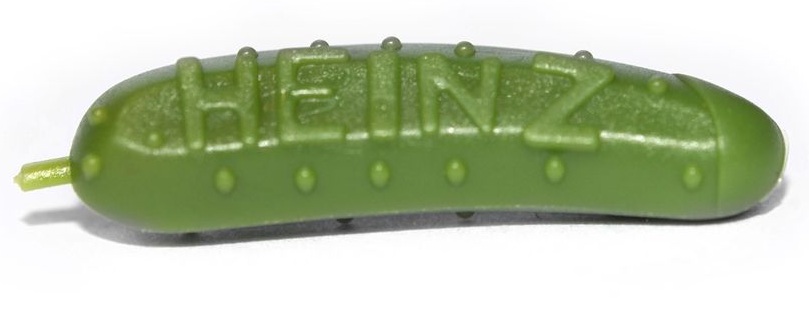History in a Pickle
With canning season upon us, we’re going to take a look at how to preserve your harvest over the next few weeks. There’s no better place to start than with one of the first known preservations methods. Do you like your pickles sour or sweet? Let us know in the comments.
Cleopatra swore by them. They make appearances in the Bible and in Shakespeare’s writing. Pickles got their start nearly 5,000 years ago, when ancient Mesopotamians began soaking cucumbers in acidic brine, as a way to preserve them. Since then, they have been a staple in cultures around the globe, renowned for their heartiness, health benefits and delicious taste.
Pickles were first brought to America in the 17th century by Christopher Columbus. (Like many explorers, he loved traveling with them because they could survive the long journeys, and they helped prevent scurvy.) By the 19th century H.J. Heinz Company, Inc. had cornered the market thanks to some truly ingenious marketing strategies. By the 2010s, Americans alone were eating more than 2 million pounds of pickles a year!
Ancient World
Around 2400 B.C.
Pickling — preserving foods in vinegar, brine or a similar solution — is one of the oldest methods of food preservation. Though its exact origins are unknown, archaeologists believe that ancient Mesopotamians pickled food as far back as 2400 B.C., according to the New York Food Museum. Several centuries later, cucumbers native to India were being pickled in the Tigris Valley.
50 B.C.
Queen Cleopatra of Egypt credited the pickles in her diet with contributing to her health and legendary beauty. Meanwhile, Cleopatra’s lover Julius Caesar and other Roman emperors gave pickles to their troops to eat in the belief that they would make them strong.
A.D. 900
Dill, one of the most important herbs used in pickling cucumbers and other vegetables, arrived in Western Europe from its native Sumatra around A.D. 900, although ancient Greeks and Romans used it extensively centuries earlier.
Age of Exploration
1492
During the Age of Exploration, many sailors on transoceanic voyages suffered from scurvy, a nasty but all-too common disease caused by a deficiency of Vitamin C. On his storied expedition to the New World, Christopher Columbus reportedly rationed pickles to his sailors, even going so far as to grow cucumbers in Haiti to restock for the rest of the trip.
1650s
By 1659, Dutch farmers in New York had begun growing cucumbers in the area that is now Brooklyn. Dealers bought the cucumbers, pickled them and sold them out of barrels on the street, beginning what would become the world’s largest pickle industry. Later waves of immigration to New York in the late 19th and early 20th centuries — including large numbers of Eastern European Jews, who introduced kosher dill pickles to America — would cement the city’s place at the center of the pickle world.
19th Century
1858
Early in the 1850s, the Scottish chemist James Young invented paraffin wax, which created a better seal in jars used to preserve food. Then in 1858, John Mason of Philadelphia patented the first Mason jar, made from a heavyweight glass that could withstand high temperatures during the canning process. Mason’s patent expired in 1879, but manufacturers of similar jars continued to use the Mason name.
1893
At the 1893 Chicago World’s Fair, “Pickle King” H.J. Heinz dispatched a few local boys to tempt fairgoers with a “free gift” if they visited Heinz’s out-of-the-way booth and tasted his wares. By the end of the fair, Heinz had given out some 1 million “pickle pins,” launching one of the most successful marketing gambits in U.S. history. H.J. Heinz Company, Inc. repeated the pickle pin promotion at the World’s Fairs of 1896, 1898 and 1939. Heinz’s green pickle pins can still be bought today.
20th Century
1940s
During World War II, the U.S. government rationed pickles, and 40 percent of the nation’s production of pickles went to the armed forces. In 1948, the trade organization Pickle Packers International, founded in 1893, launched International Pickle Week (around Memorial Day each year).
2000
After beating the Dallas Cowboys 41-14 on a day when temperatures reached 109˚ F, players from the Philadelphia Eagles famously credited their endurance to drinking pickle juice. A later study at Brigham Young University, backed these claims up with science, showing that knocking back pickle juice “relieved a cramp 45 percent faster” than drinking no fluids and about 37 percent faster than water.
Pickles aren’t limited to the dill and cucumber variety. They can be sweet, sour, salty, hot or all of the above. Pickles can be made with cauliflower, radishes, onions, green beans, asparagus and a seemingly endless variety of other vegetables and fruits. When the English arrived in the New World, they brought their method for creating sweet pickles with vinegar, sugar and spiced syrup. Eastern Europeans introduced various forms of lacto-fermented cabbage, known as sauerkraut. The French serve tiny, spiced cornichons with heavy pâtés and pungent cheeses. In the Middle East pickles are served with every meal, from peppers to olives to lemons. Russians pickle tomatoes, among other things. Koreans have their kimchi, the Japanese pickle plums and daikon, and Italians pickle eggplants and peppers. Each area of the world has its own beloved variety of pickle.




